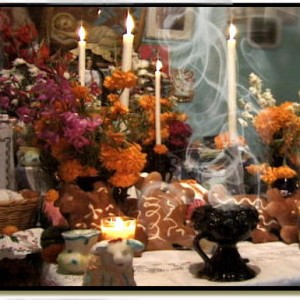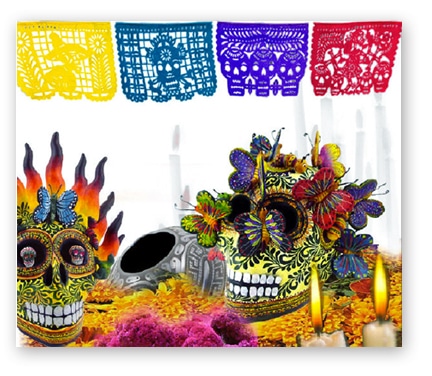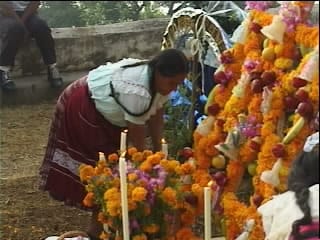When is the Day of the Dead?
On November 1st and 2nd, Mexico celebrates the Day of the Dead, and there are two very special places where this ritual is especially impressive: Mixquic, a small town in Mexico City, and Janitzio, a charming little island in the state of Michoacan.

Day of the Dead Ofrenda
The first inhabitants of Michoacan, the state where Janitzio is located, thought that because of the extraordinary beauty of this lake, it was the door to heaven and that through it the gods used to come down to earth.
One of the biggest and richest kingdoms of pre-Hispanic times was established in this Mexican state, the Purepecha Empire, which was able to maintain its independence from the powerful Aztecs, who at the time had control over most of Mesoamerica, Middle America.
Like the rest of the pre-Hispanic civilizations, these people succumbed to the Spanish conquerors, which imposed their customs, their language, and their Catholic religion. The native people acquired these new cultural elements but blended and adapted them to their own culture; from this fusion, new beliefs and rituals were born, such as the Celebration of the Day of the Dead.
Michoacan is probably one of the most representative of the merging of the two cultures, observed in their magnificent Spanish architecture, its spacious plazas or squares, and their folklore and religious fervor of their traditions.
Near the last days of October, the entire region prepares for the great fiesta of Los Días de Muertos, the Days of the Dead. The square fills with stands that offer all types of colorful figures allusive to death, the most popular made of sugar.
Markets are filled with the cempasúchil flower; this orange marigold was the flower that the Aztecs used to remember their dead. Its color represents the hues of earth and is used to guide souls to their homes and altars.
Many families grow their own cempasúchil, believing that doing so is more appropriate for their offerings. Through their work and their care, these flowers grow and will finally adorn their ofrendas and their tombs.




